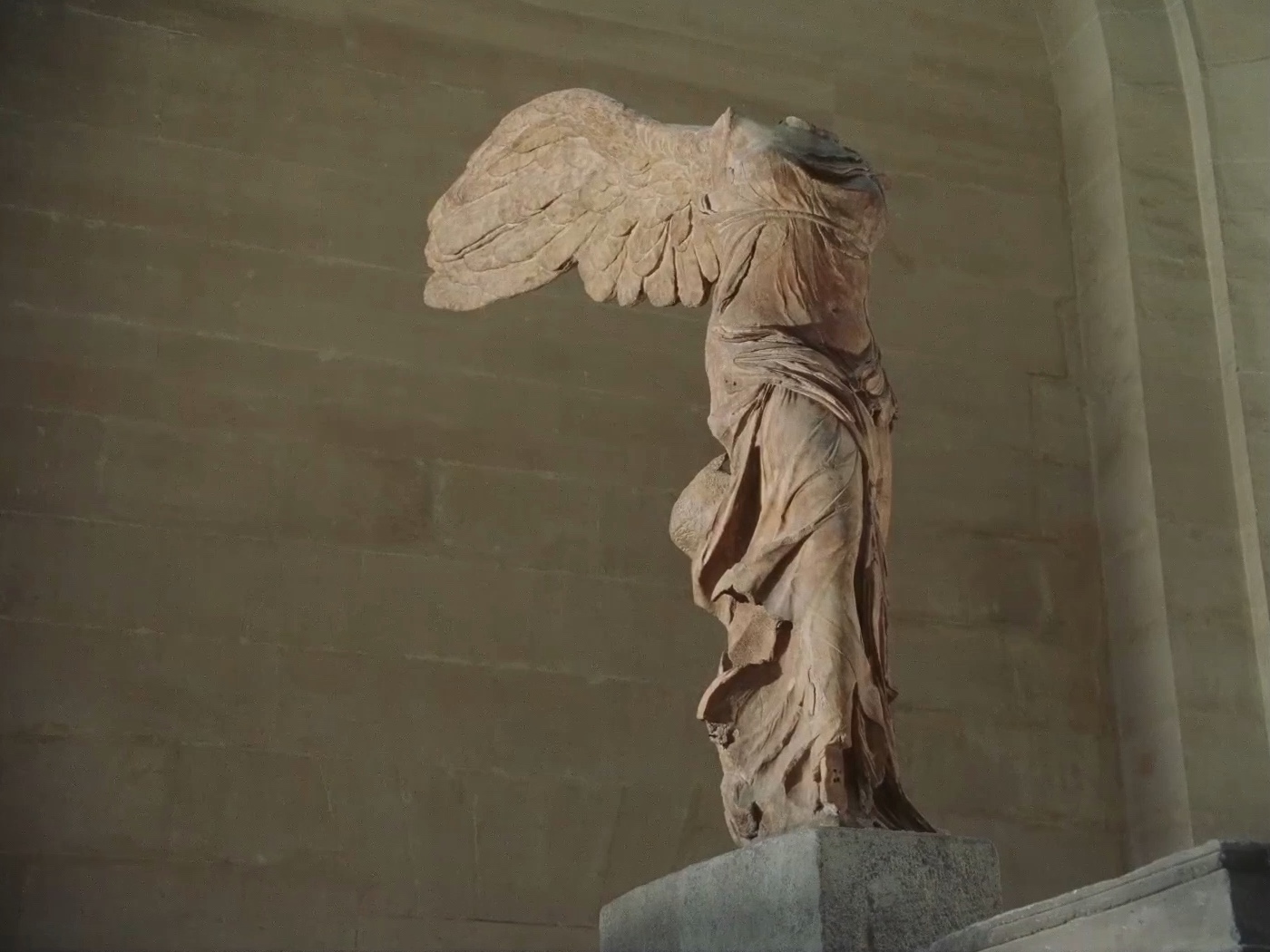Une visite au Louvre (2004, 47 min.)

Where, during this “visit to the Louvre”, fifteen years after Cézanne (1989), is the painter whom Gilles Deleuze called “the Straubs’ master”? He is neither in the museum nor the series of paintings that make up this particular visit. Yet he occupies a central place through the text that a voice-over reads aloud; a material that could not be more impure, composed of memories, perforated with borrowed quotations, invented expressions, and passages of pure fiction in indirect style.
From his conversations with Joachim Gasquet, a twenty-three-year-old poet and son of Cézanne’s childhood friend, only the painter’s words are preserved – read aloud by a female voice – alongside a few of retorts by his young conversation partner – read out by Straub himself. The filmmaker’s voice resounds in this short question: “And Courbet?” Courbet, for several reasons. For having worked out a realism of the land and the peasants. For having painted Un enterrement à Ornans, an aphasic people, silently communicating with the deepest layers of its history. Courbet, arbitrarily kept hidden from the public’s gaze by the authorities, is the empty centre that Cézanne is trying to bring back to life in his conversation with Gasquet. “We always let ourselves be taken advantage of… It is theft… We are the State… I am… Painting… Who understands Courbet? It’s as if he was thrown in jail in this basement”. Cézanne made his young friend promise to do everything in his power to ensure that one day Courbet would be given his place in the salon of the Moderns, “in the light”.
To hear the painter’s protest (against the institutions and the academic art forms) in the Louvre itself would be the perfect example of the “Straubian fantasy: a state radio that speaks Brecht” (Serge Daney). The paint and words that form this visit’s material are the soil from which Straub and Huillet unearth Cézanne’s anger. Bemoaning that France was hiding these treasures, Cezanne told Gasquet: “Let’s set fire to the Louvre… right away”, recalling these other words that Straub often quoted: “Look at this mountain, once it was fire”.
Image from Une visite au Louvre (Jean-Marie Straub & Danièle Huillet, 2004)
With thanks to Oscar Pedersen, Viktor Retoft and Balthazar.
This is a translated excerpt from ‘Du feu dans la térébenthine’, published in Cahiers du Cinéma n°588, March 2004. Revised by Antoine Thirion in 2023 and published in Balthazar no. 9, 2023, dedicated to the work of Danièle Huillet and Jean-Marie Straub.

